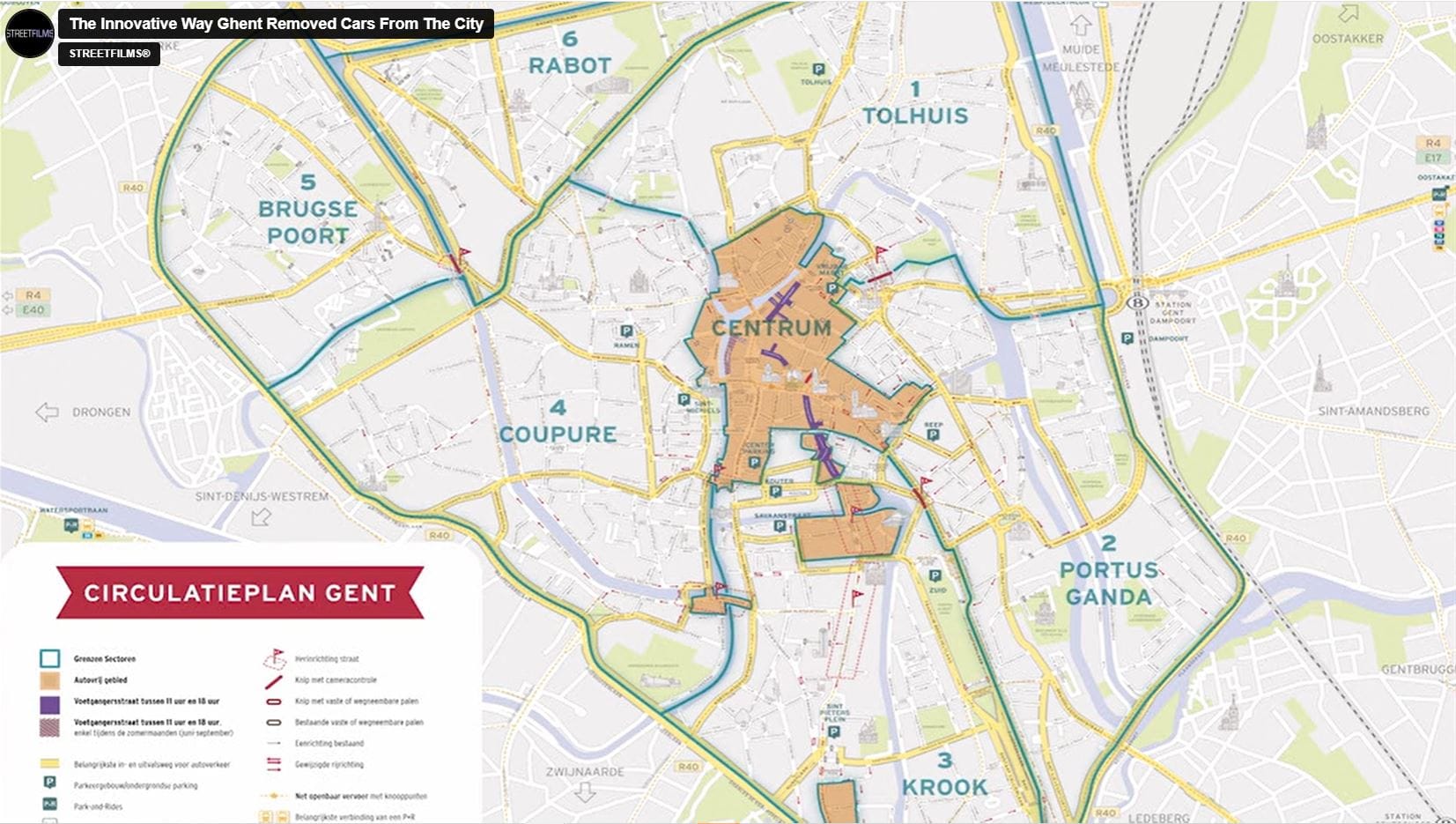The innovative way Ghent removed cars from the city: a blueprint for Oxford?

Ghent's 'circulation plan' was implemented in 2017 and has proved to be a highly successful way of transforming the city into a safe, attractive and economically flourishing place. Like Oxford, Ghent had a serious congestion problem it needed to address.
Oxfordshire County Council's traffic filter plan, which will be launched this November, in many ways emulates this successful blueprint from a city that is similarly sized, with rivers running through it and old, medieval roads that simply don't have enough space for everyone to drive.
This video by StreetFilms on the Film Freeway website explains how the plan was rolled out and how it has improved Ghent in so many ways. The video can also be viewed on Vimeo.
It's worth a watch and conveys quite an inspiring vision of what we could have in Oxford.

If you design a city for cars, you get cars; if you design a city for people, you get people.
Filip Watteeuw, Vice Mayor, Ghent
A key take-home from the film is that although there was a lot of opposition before the scheme went in, once it was operational the scheme had spectacular results: cycling is up, car ownership and road injuries are down, public satisfaction is high, businesses are thriving and Watteeuw’s personal vote share has increased.
A lot of people thought Ghent would die, that nobody would come to Ghent anymore, all the shops would have to close.
Ole Mahieu, Policy Officer, Fietsersbond
The moment it started ... everything changed. After that rough period of two and a half years, I came outside with a journalist and took a trip with a bike through Ghent and everywhere people said "Congratualations!", "Very good!", "We are very pleased with it!".
Filip Watteeuw, Vice Mayor, Ghent
Whether Oxford's traffic filter scheme will be as successful or popular as the Ghent Circulation Plan remains to be seen.
A key difference between the two is that the Oxford scheme is much more permissive, with many more categories of automatically exempted vehicles (including coaches, minibuses, vans or light commercial vehicles and heavy goods vehicles) and a generous pass allocation allowing each Oxford household 100 day passes per car for up to 3 cars.
Another key difference is that whereas the Ghent Circulation Plan had a number of aims, including reducing congestion, making cycling and walking safer and nicer, creating more space for relaxing and socialising and significant public realm improvovement, Oxford's scheme is focussed only reducing congestion enough to improve bus services. The traffic filter scheme is first and foremost a bus service improvement plan, and whilst we look forward to significant improvements for bus users, there aren't likely to be many benefits experienced by cyclists, pedestrians and wheechair/mobility scooter users. Unfortunately this is mainly a result of central Government's chronic underfunding of local councils for public realm improvement (along with everything else).
Some are concerned that the dilution of the scheme with numerous exemptions/passes and its narrow focus on improving bus services will mean it won't be effective enough to produce the kind of visible and experienced outcomes that will make it popular with residents.
For further information about the Oxford Traffic Filter scheme, visit OLS's new traffic filters microsite.
